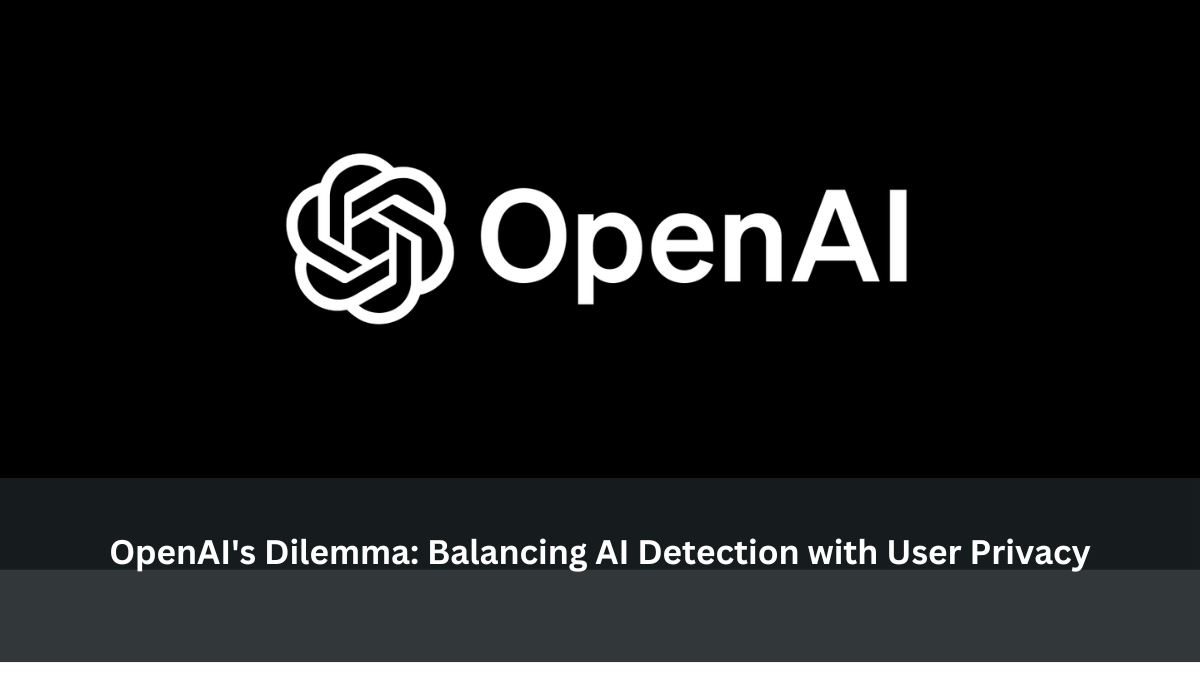AI
OpenAI’s Dilemma: Balancing AI Detection with User Privacy

In recent years, the rise of artificial intelligence (AI) technologies like ChatGPT has revolutionized various fields, from writing and research to customer service and entertainment. However, with these advancements come new challenges, particularly in the realm of academic integrity. OpenAI, a leading organization in AI development, finds itself at a crossroads regarding the deployment of an anticheating tool designed to detect AI-generated text. The internal debates and complexities surrounding this issue reveal a broader discussion about technology’s role in education and privacy.
The Current State of AI Detection
The Promise of Watermarking Technology
OpenAI has developed a method that involves “watermarking” AI-generated text to identify its origin. This technique subtly alters the way AI systems like ChatGPT generate text, embedding a pattern that can be detected by specific tools. According to internal documents, this watermarking method is approximately 99.9% effective, making it highly reliable in distinguishing AI-written content from human-written content.
John Thickstun, a Stanford researcher, supports the efficacy of this technology, emphasizing that the likelihood of undetected watermarking is extremely low. However, concerns persist about potential methods to bypass the watermark, such as translating the text into another language and back or manipulating the text with emojis.
The Debate Within OpenAI
Despite the technological advancements, OpenAI has hesitated to release this tool. The company is torn between its commitment to transparency and the need to maintain user trust. A survey of ChatGPT users revealed that nearly one-third would be deterred by the introduction of anticheating technology, highlighting a significant concern about its impact on user experience. Furthermore, OpenAI is wary of the tool disproportionately affecting non-native English speakers, which complicates the decision further.
The Implications for Education
Rising Concerns Among Educators
As AI tools become more sophisticated, educators are increasingly worried about their impact on academic integrity. Alexa Gutterman, a high school teacher in New York City, reflects the sentiment of many educators who feel desperate for solutions to AI misuse. A survey by the Center for Democracy & Technology found that 59% of teachers are certain some students have used AI to assist with schoolwork, a significant increase from the previous year.
Some teachers are experimenting with creative strategies to address this issue. For instance, Josh McCrain, a political science professor at the University of Utah, has incorporated specific, sometimes quirky, requirements into assignments to catch students who rely on AI. These measures are designed to ensure that students engage genuinely with their work rather than outsourcing it to AI.
The Role of AI in Education
While AI presents challenges, it also offers opportunities. Some educators advocate for leveraging AI as a tool to enhance learning rather than merely viewing it as a threat. For example, AI can assist in generating ideas, providing feedback, and supporting research. The key is to encourage students to use AI as a supplementary tool rather than a substitute for their own efforts.
The Broader Context
Comparisons with Other Companies
OpenAI is not the only organization grappling with AI detection. Google, for example, is beta-testing a watermarking tool called SynthID for its Gemini AI, aiming to address similar concerns. This broader context underscores the importance of developing effective detection methods across the industry.
The Debate Over Transparency vs. User Trust
OpenAI’s predicament reflects a broader debate within the tech community about the balance between transparency and user privacy. While some argue that detection tools are crucial for maintaining academic integrity, others worry about the potential negative impact on user experience and privacy. OpenAI’s cautious approach to rolling out its tool highlights these complexities, as the company seeks to navigate the fine line between innovation and user satisfaction.
Looking Forward: The Future of AI and Detection
The Path Ahead for OpenAI
OpenAI’s internal discussions and surveys indicate a need for a thoughtful approach to implementing AI detection technology. The company is exploring alternative methods and weighing potential impacts on its user base and the broader ecosystem. This careful deliberation reflects a commitment to both technological advancement and ethical considerations.
The Role of Policy and Regulation
As AI technology continues to evolve, the role of policy and regulation becomes increasingly important. Clear guidelines and standards for AI use and detection could help mitigate concerns and provide a framework for addressing issues related to academic integrity and privacy. Collaboration between technology companies, educators, and policymakers will be essential in shaping the future of AI in education.
The ongoing debate within OpenAI about the release of its anticheating tool highlights the broader challenges associated with integrating advanced AI technologies into everyday life. While the development of effective detection methods is crucial for maintaining academic integrity, it is equally important to consider the impact on user experience and privacy. As we move forward, a balanced approach that respects both technological innovation and ethical considerations will be key to navigating the complex landscape of AI in education.
Ultimately, the goal should be to harness AI’s potential while ensuring that it serves as a tool for learning and growth, rather than a means of circumventing genuine academic effort. As we continue to explore these issues, ongoing dialogue and thoughtful solutions will be essential in shaping a future where technology enhances rather than undermines our educational values.
